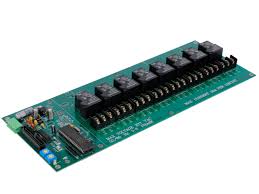Comprehensive Overview of Sensors: Definitions, Standards, Characteristics, Communication Protocols, Automotive Applications & Future Trends
01 Definition and Composition

According to GB 7665-2005, a sensor (or transducer) is a device or assembly that detects a physical quantity and converts it into a usable output signal according to defined rules. A typical sensor consists of:
-
Sensitive Element – Directly interacts with the measured quantity and converts it into an intermediate signal. It is the core functional component.
-
Conversion Element – Converts the detected physical signal into an electrical output suitable for transmission, analysis, or control.
-
Basic Conditioning Circuitry – Processes the electrical output into a form suitable for display, recording, or further data processing.
Sensors are typically classified by the measured input quantity, such as temperature, humidity, pressure, displacement, flow, acceleration, and light. When a sensor outputs a standardized electrical signal, it is referred to as a transmitter.
02 Graphical Symbols, Naming Standards, and Coding Rules

Graphical Symbols (GB/T 14479-93)
-
Square: conversion element
-
Triangle: sensitive element
-
“X”: measured quantity
-
“*”: conversion principle
Naming Rules (GB/T 7666-2005)
A complete sensor name includes a headword and up to four modifiers:
-
Headword: “sensor”
-
First modifier: measured quantity
-
Second modifier: conversion principle (often ends with “-type”)
-
Third modifier: structural/material/performance features
-
Fourth modifier: key technical parameters (range, accuracy, etc.)
Example:
Sensor, pressure, piezoresistive, monocrystalline silicon, 600 kPa.
Coding Rules (GB/T 7666-2005)
Sensors are coded using uppercase pinyin initials and Arabic numerals:
-
C – headword (sensor)
-
Measured quantity code
-
Conversion principle code
-
Serial number
Example: Hall-effect current sensor.
03 Sensor Characteristics and Specifications

3.1 Static Characteristics (GB/T 18459-2001)
Static characteristics describe input–output relationships when the measured quantity is constant or changes slowly.
Key parameters include:
-
Linearity – deviation from ideal straight-line behavior (%FS)
-
Sensitivity – ratio of output change to input change
-
Resolution – minimum detectable input variation
-
Hysteresis – output deviation depending on input direction
-
Repeatability – variation in repeated measurements
-
Accuracy – includes precision, trueness, combined error
-
Stability / Drift – output change over time
-
Temperature Drift – output change with temperature
3.2 Dynamic Characteristics
Dynamic characteristics describe sensor performance when input varies with time:
-
response time
-
frequency response
-
bandwidth
-
phase shift
These characteristics determine suitability for periodic, transient, or random signals.
04 Communication Protocols for Sensors
Modern vehicles integrate multiple sensors that communicate using various protocols depending on speed, reliability, and complexity requirements.
Common Automotive Sensor Protocols
Protocol |
Features |
Typical Use |
|---|---|---|
| CAN | High reliability, real-time, multi-master | Speed, pressure, temperature sensors |
| LIN | Low cost, low speed | Window control, seat modules |
| FlexRay | Deterministic, high-speed | Safety-critical ADAS modules |
| MOST | High-bandwidth multimedia | Infotainment systems |
| Ethernet | Very high bandwidth | ADAS cameras, radar, lidar |
| PWM | Encodes analog signals | Position/speed sensors |
| PSI5 | High-precision, high-speed | Crankshaft, wheel speed sensors |
| SPI | High-speed short-distance | MEMS/MCU communication |
| SENT | Single-wire, robust | Pressure/position sensors |
Protocol selection depends on sensor type, data rate, signal integrity, and system architecture.
05 Automotive Sensors Overview

Automotive sensors convert mechanical, thermal, optical, or chemical signals into electrical inputs for vehicle control systems. Sensors can be grouped into:
Vehicle-Body Perception Sensors
Used in powertrain, transmission, chassis, safety systems:
-
Pressure, position, temperature
-
Acceleration and angular velocity
-
Airflow and gas sensors
-
Most based on MEMS technology
Environmental Perception Sensors
Support ADAS and autonomous driving:
-
Cameras
-
Ultrasonic sensors
-
Millimeter-wave radar
-
Lidar
-
IMU
System-Level Roles
Examples include:
-
Braking system: wheel speed, brake pressure, accelerometers
-
Steering: steering angle, torque sensors
-
Suspension: height, pressure, acceleration sensors
-
Electric drive: current, voltage, temperature, motor speed
-
Thermal management: coolant temperature, battery temperature
-
ADAS: radar, lidar, cameras, IMU
-
Smart cockpit: biometric, environmental, gesture sensors
06 Future Trends in Automotive Sensors
Key trends shaping next-generation automotive sensing:
-
Higher integration and intelligence
-
Multi-sensor fusion for autonomous driving
-
Higher reliability for EVs and harsh environments
-
Miniaturization & weight reduction
-
Low power design for EV range extension
-
Wireless sensors reducing wiring complexity
-
Advanced materials and manufacturing
-
Enhanced data security & privacy
-
AI/ML-driven closed-loop control and diagnostics
-
Stricter standards for safety and interoperability

